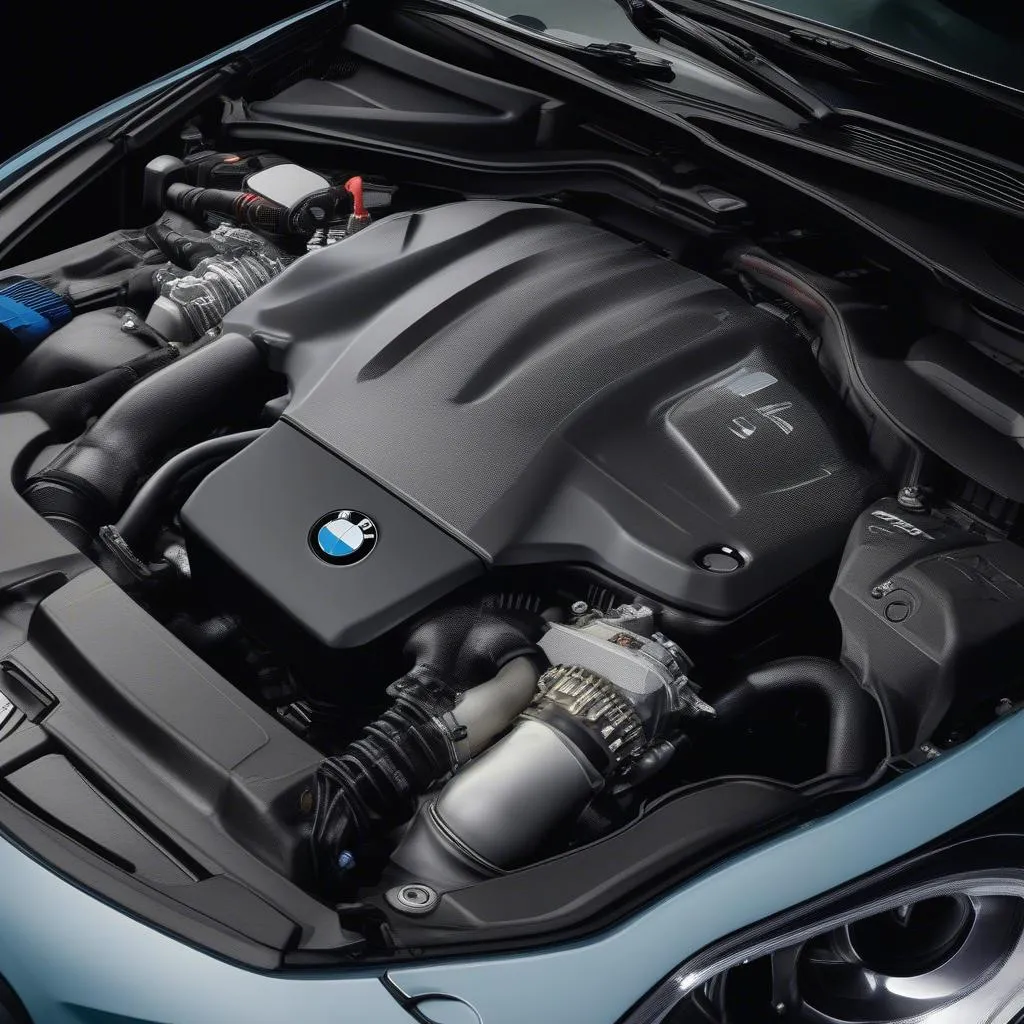Imagine this: You’re cruising down the Pacific Coast Highway, the California sun on your face, the wind in your hair, when suddenly, your BMW’s check engine light pops on. A wave of worry washes over you. What now? You pull into a gas station, grab their OBD scanner, and it throws a P1447 code at you. What does it even mean?
Don’t panic! This is a scenario many BMW owners, especially those driving models like the 325i or X5, have found themselves in. This article will delve deep into the meaning of the P1447 code, discuss possible causes, symptoms, and solutions, and empower you to take control of the situation.
Understanding the Language of Your BMW: What is OBD Code P1447?
Before we dive into the specifics of the P1447 code, let’s clarify what an OBD code is. OBD stands for On-Board Diagnostics, a system that monitors your vehicle’s emissions, engine performance, and other crucial systems.
Think of your BMW as a sophisticated computer on wheels. When something goes wrong, the OBD system acts like a helpful tech support team, flagging the issue with a specific code that mechanics and DIY enthusiasts can use to diagnose the problem.
Now, let’s decode P1447. This code specifically relates to the “Secondary Air Injection System Flow too Low” for Bank 1. Let’s break it down:
- Secondary Air Injection System: This system pumps fresh air into the exhaust manifold during cold starts. Why? To help reduce emissions during those critical first few minutes of operation.
- Flow too Low: This part of the code signifies that the air injection system is not delivering enough air to the exhaust, signaling a potential problem.
- Bank 1: In engines with multiple cylinder banks (like a V6 or V8), “Bank 1” typically refers to the side of the engine containing cylinder #1.
In simpler terms, your BMW is telling you there’s an issue with the airflow in its emission control system.
Why Should You Care About P1447?
“It’s just an emissions thing, right?” While it might seem like a minor issue, ignoring a P1447 code could lead to more significant problems down the road, impacting your BMW’s performance, fuel efficiency, and even its environmental footprint.
Potential consequences of ignoring P1447:
- Decreased Fuel Economy: A malfunctioning secondary air injection system can disrupt the optimal air-fuel mixture in your engine, leading to reduced fuel efficiency.
- Increased Emissions: As the name suggests, this system plays a crucial role in controlling harmful emissions. Ignoring the problem can increase your BMW’s environmental impact.
- Catalytic Converter Damage: The catalytic converter, responsible for cleaning exhaust gases, can be damaged by the rich fuel mixture caused by a faulty secondary air injection system.
 BMW Engine Bay
BMW Engine Bay
Common Causes of P1447 in BMWs
Several culprits could be triggering the P1447 code in your BMW. Here are some of the most common ones:
1. Faulty Secondary Air Pump
The secondary air pump is the workhorse of the air injection system, responsible for pumping air into the exhaust. A malfunctioning pump, often due to worn-out components, is a frequent cause of the P1447 code.
2. Leaky Vacuum Hoses
The secondary air injection system relies on a network of vacuum hoses to function correctly. Over time, these hoses can crack, dry out, or become disconnected, leading to air leaks and triggering the P1447 code.
3. Clogged Air Injection Valve
The air injection valve acts as a gatekeeper, controlling the flow of air into the exhaust manifold. If this valve becomes stuck closed or clogged with debris, it can restrict airflow and cause the P1447 code.
4. Malfunctioning Secondary Air Injection Pump Relay
This relay acts as an electrical switch, controlling the power supply to the secondary air pump. A faulty relay can prevent the pump from receiving power, leading to the P1447 code.
5. Wiring Issues
Like any electrical system, the secondary air injection system relies on a network of wires to transmit signals. Damaged, corroded, or loose wiring can disrupt these signals, causing malfunctions and triggering the code.
 BMW Mechanic Diagnosing Problem
BMW Mechanic Diagnosing Problem
Troubleshooting and Fixing the P1447 Code
While the P1447 code might seem intimidating, the good news is that it’s often a relatively straightforward fix. Here’s a step-by-step approach to troubleshooting the issue:
1. Verify the Code: Before diving into repairs, double-check that the P1447 code is the culprit. Use a reliable OBD scanner to ensure there aren’t any other codes present.
2. Inspect the Vacuum Hoses: Visually inspect all the vacuum hoses connected to the secondary air injection system for cracks, loose connections, or signs of wear and tear. Replace any damaged or suspicious hoses.
3. Check the Secondary Air Pump: Listen for any unusual noises coming from the pump during a cold start. If you hear grinding, whirring, or no sound, it might indicate a faulty pump that needs replacement.
4. Test the Air Injection Valve: With the engine off, disconnect the hose leading to the air injection valve and blow air through it. If you feel resistance or cannot blow air through, the valve might be stuck closed or clogged and needs cleaning or replacement.
5. Inspect the Relay and Wiring: Locate the secondary air injection pump relay (usually found in the fuse box) and test it for continuity using a multimeter. Check all related wiring for damage, corrosion, or loose connections.
6. Seek Professional Help: If you’re uncomfortable performing these checks or if the problem persists, don’t hesitate to seek help from a qualified BMW mechanic. They have the expertise and specialized tools to diagnose and fix the issue efficiently.
Related Questions
Here are some frequently asked questions about the BMW OBD code P1447:
- Can I still drive my BMW with a P1447 code? While you might be able to drive for a short period, it’s not recommended to ignore the code. Prolonged driving with a faulty secondary air injection system can lead to further damage and costlier repairs down the line.
- Is it safe to clear the P1447 code myself? While you can clear the code using an OBD scanner, doing so won’t magically fix the underlying problem. It’s crucial to identify and address the root cause to prevent the code from reappearing.
- How much does it cost to fix the P1447 code? The repair cost can vary depending on the specific issue and labor rates in your area. A simple vacuum hose replacement might only cost a few dollars, while a new secondary air pump could set you back a few hundred.
 BMW Car in Repair Shop
BMW Car in Repair Shop
Need Help with Your BMW’s Diagnostics?
Diagnosing and fixing car issues can be daunting, especially with the complexity of modern vehicles. If you’re feeling overwhelmed or unsure about tackling the P1447 code yourself, don’t hesitate to reach out for expert assistance.
Contact us on WhatsApp at +84767531508 for 24/7 support in installing and using diagnostic tools. Our team of experienced BMW mechanics is here to help you decode your car’s language and get you back on the road with confidence.